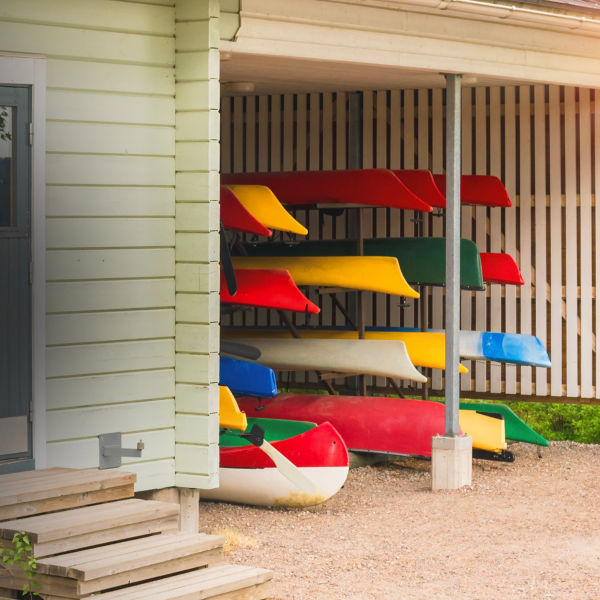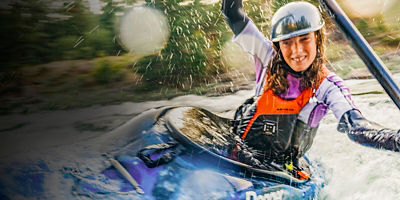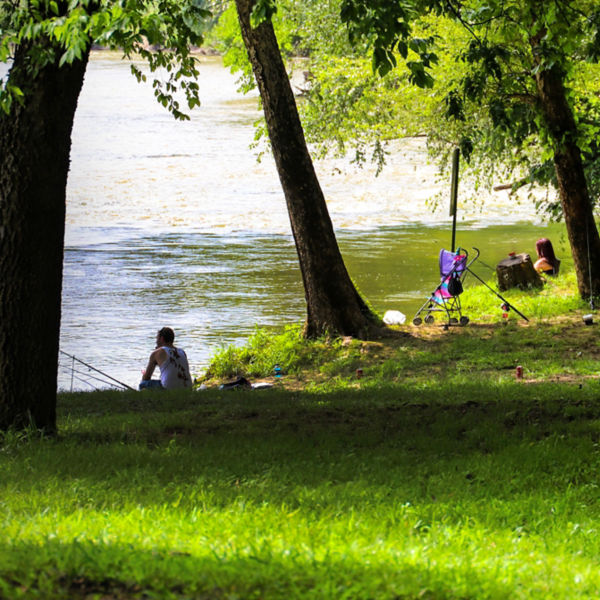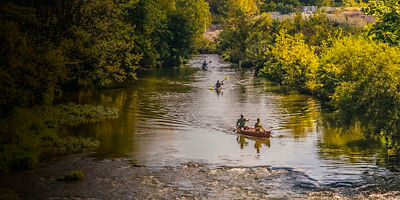
Once you’ve gained a few flatwater kayaking fundamentals in protected waters, you’ll want to stretch out your skills. A capable sea kayak can carry you on both short tours or extended journeys across large, open bodies of water, from salty ocean adventures to high-volume rivers or the Great Lakes. And with plenty of gear storage area to turn your boat into an aquatic backpacking platform, it’s all too tempting to set your sights on making miles to empty stretches of coastline. However, the bigger the water and the farther you extend, the more dynamic the conditions—and the more considerations you’ll need to factor to launch your next sea kayak trip, and safely return to shore.
Sea Kayaking Skills
Large bodies of water introduce new challenges, and additional risks, than you might not encounter on smaller lakes or bays. Take the time to gain comfort in your boat. That means the ability to get in and out with ease, as well as capably sealing your spray skirt and adjusting the seat and footpegs from the water. Consider an outfitted tour, an introductory course, or paddling with a more experienced partner for your first forays into open water.
Learning to roll your kayak is an excellent skill to gain. At the least, however, you need to be able to “wet exit” your boat upside-down, and then perform a self-rescue in deep water should you be flipped over by waves or choppy water, which is an eventuality. Practicing in a lake or pool is not enough; seek out rougher waters that are a safe swimming distance from shore (but outside of the surf zone). Paddle with a partner who can back you up, aid in proper re-entry, as well as practice other multiple-paddler rescue techniques like the T-rescue.
Gear Essentials
Comfort in your sea kayak is key. That starts with how the hull interacts with the water, so make sure that you have a touring or sea kayak ready for rougher waters. These boats are often longer and skinnier than recreational boats, coming in at about 12 to 18 feet long. They also often have a rudder, which is a steerable blade off the back of your boat, or a skeg, which is a fixed blade that sits underneath the middle of the boat, both of which help keep you on your desired line in wind and waves—and then flip up or retract for landings.
Though many kayak fishermen (and some sea kayakers in warmer climates) opt for sit-on-top ocean touring kayaks, most sea kayaks have a closed deck—meaning the deck is “closed” over the paddler’s legs, with a cockpit that is sealed off by a spray skirt worn around the paddler’s waist.
Regardless of deck type of air temperature, you need to dress for the temperature of the water, where you can comfortably take the time to perform a self-rescue. Being prepared for a capsize means dressing for immersion. Depending on water temperature, that usually means wearing either a wetsuit, or a dry suit over wicking, insulating layers. Don’t forget proper footwear that will stay on your feet for launching and landing—and then dry or drain fast and provide insulation while on board.
The other critical piece of safety gear is a U.S. Coast Guard-approved personal flotation device (PFD) that fits properly and that you are actively wearing. A hand-powered bilge pump and sponge also come in handy to drain water remaining in the cockpit following a wet exit and re-entry. Less experienced paddlers should also consider a paddle leash and additional floatation bags to fill unused storage spaces, which aid buoyancy and displace water that might flood in with a capsize or compromised hull, bulkhead, or hatch.
Beyond a good paddle, many sea kayakers bring a spare two-piece breakdown paddle—accessible in your deck rigging—and also opt for a helmet when navigating surf launches and landings, as well as exploring shallow coastal rock gardens.
Make sure you have proper navigation equipment including charts, GPS, and, if you are in shipping or otherwise busy waters, a proper marine VHF radio to communicate with other boats on the water. A cell phone in a dry bag for emergency communication can also be of critical help. At the least, latch a whistle to your PFD to signal distress in an emergency.
Prepare for your time on the water by bringing any other day-paddling essentials in a dry bag rigged to your deck or stored in a hatch within easy reach. Think: First aid kit, extra layers, sunscreen, a watch, and enough food and water for your trip. Bring about a liter of water for every hour you plan on sea kayaking. Add water purification like a filter or iodine water if you’ll have access to an additional freshwater source.
(Be sure to give your gear and clothing a rinse with freshwater when you get home to keep the saltwater from damaging or corroding your equipment—especially zippers.)




















































































































